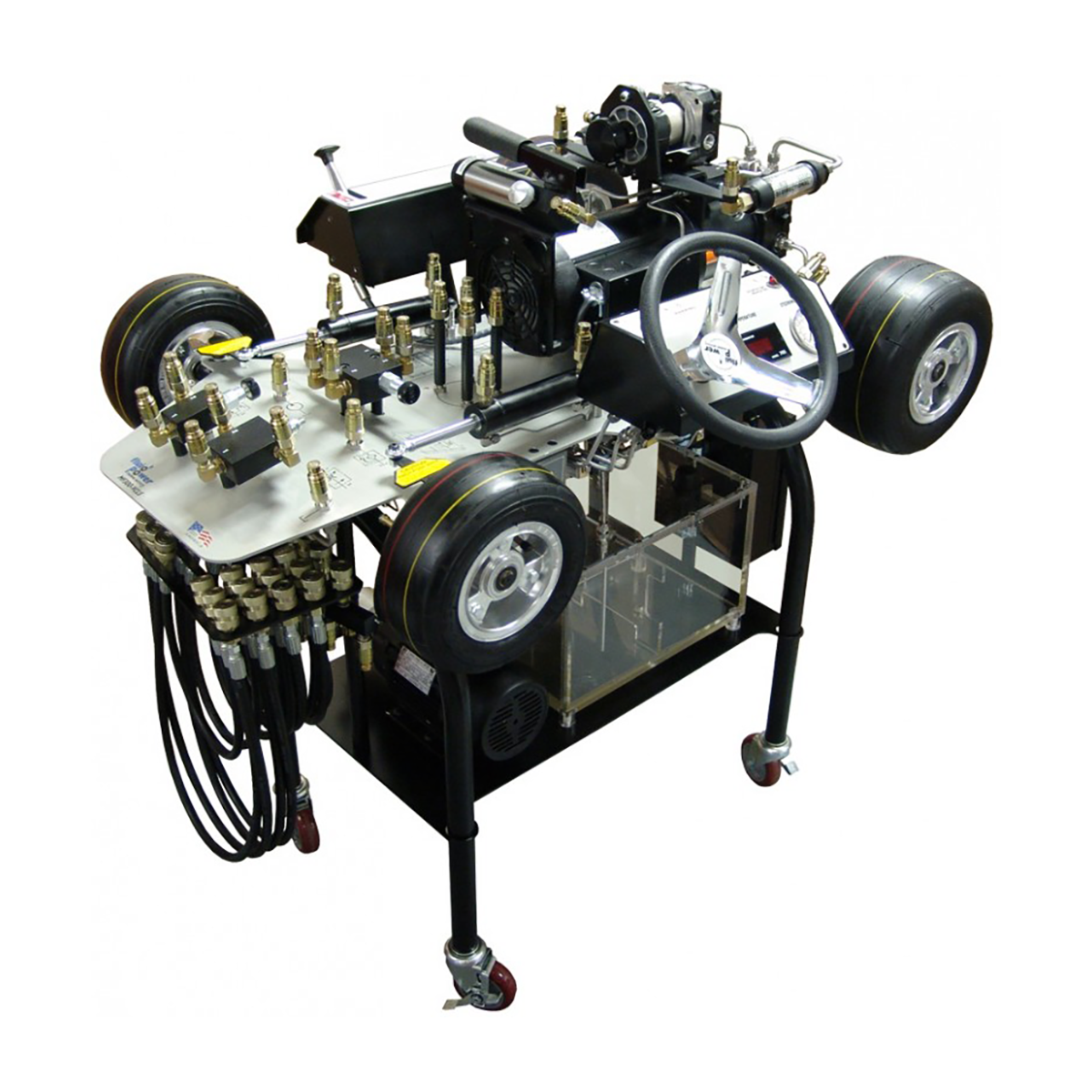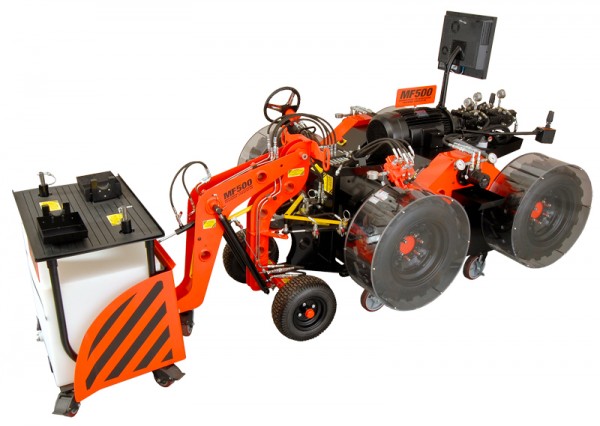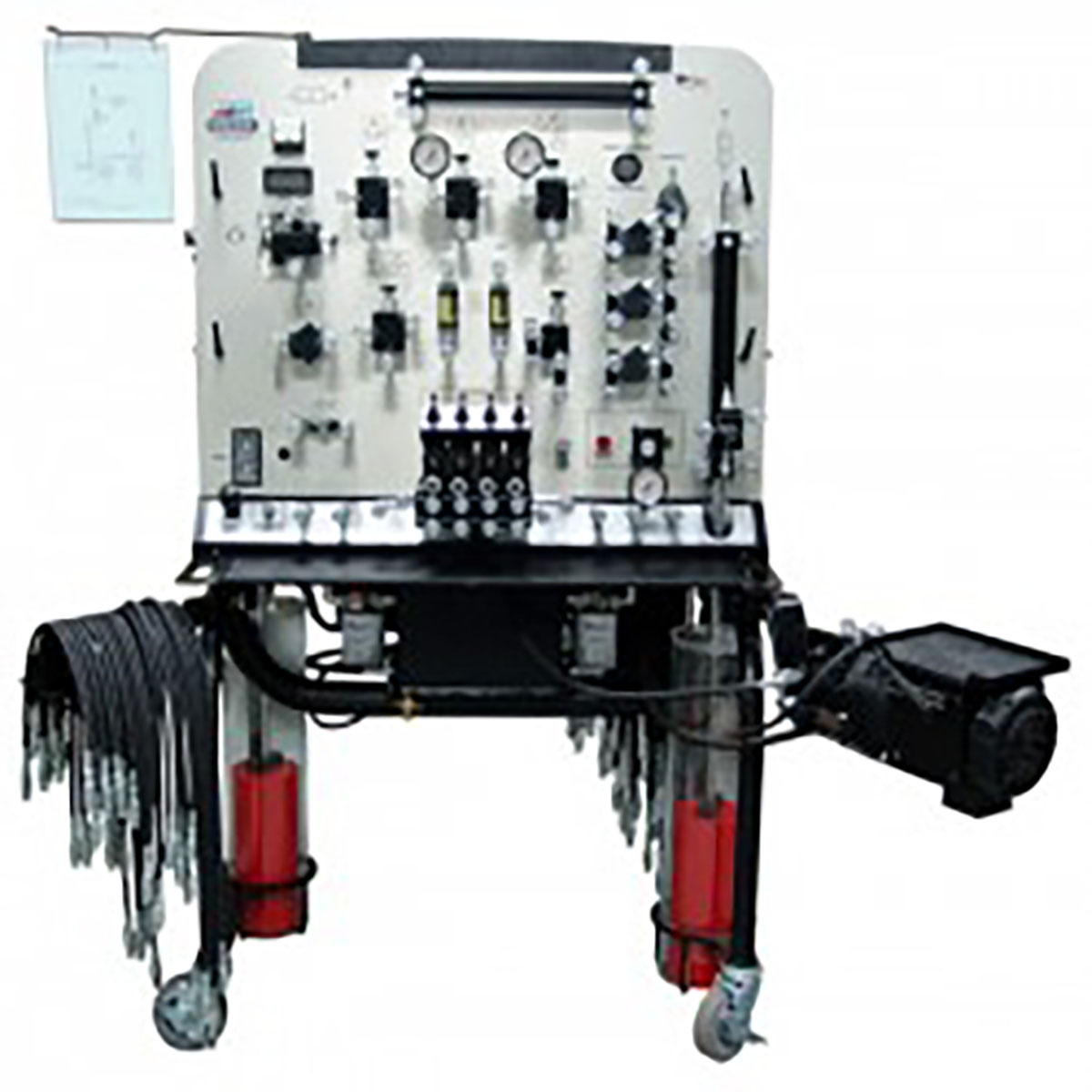Hydraulic Steering & Hydrostatic Transmission with Troubleshooting
The FP-MF300-VCLS-TS simulator is designed to help schools and colleges safely and effectively troubleshooting industrial and mobile hydraulic systems.
- Designed to have students understanding every component found in a typical articulated vehicle’s steering, including dual steering cylinders
- Designed to have students learning the hydrostatic transmission or closed-loop system
- Designed to help schools and colleges overcome the critical shortage of highly-skilled hydraulic diagnostic technicians
- Will aid an instructor in teaching students how to troubleshoot the following hydraulic steering system components:
○ Fixed displacement pump
○ Steering orbitrol valves
○ Priority flow dividers
○ Steering system’s main pressure relief valves
○ Dual cross-port relief valves
○ Single and dual steering cylinders - Will aid an instructor in teaching students how to troubleshoot the following hydrostatic transmission system components:
○ Transmission doesn’t operate in either direction – forward or reverse
○ Neutral is difficult or impossible to find
○ Transmission is overheating and lacks power
○ Transmission is sluggish
System teaches:
Components Include:
System teaches:
Components Include:
Austin
Contact Us
Leading The Future of Teaching Tech™
GET IN TOUCH
Connect with Us
Let us partner with you to build premier automotive, diesel, and fluid power programs.





